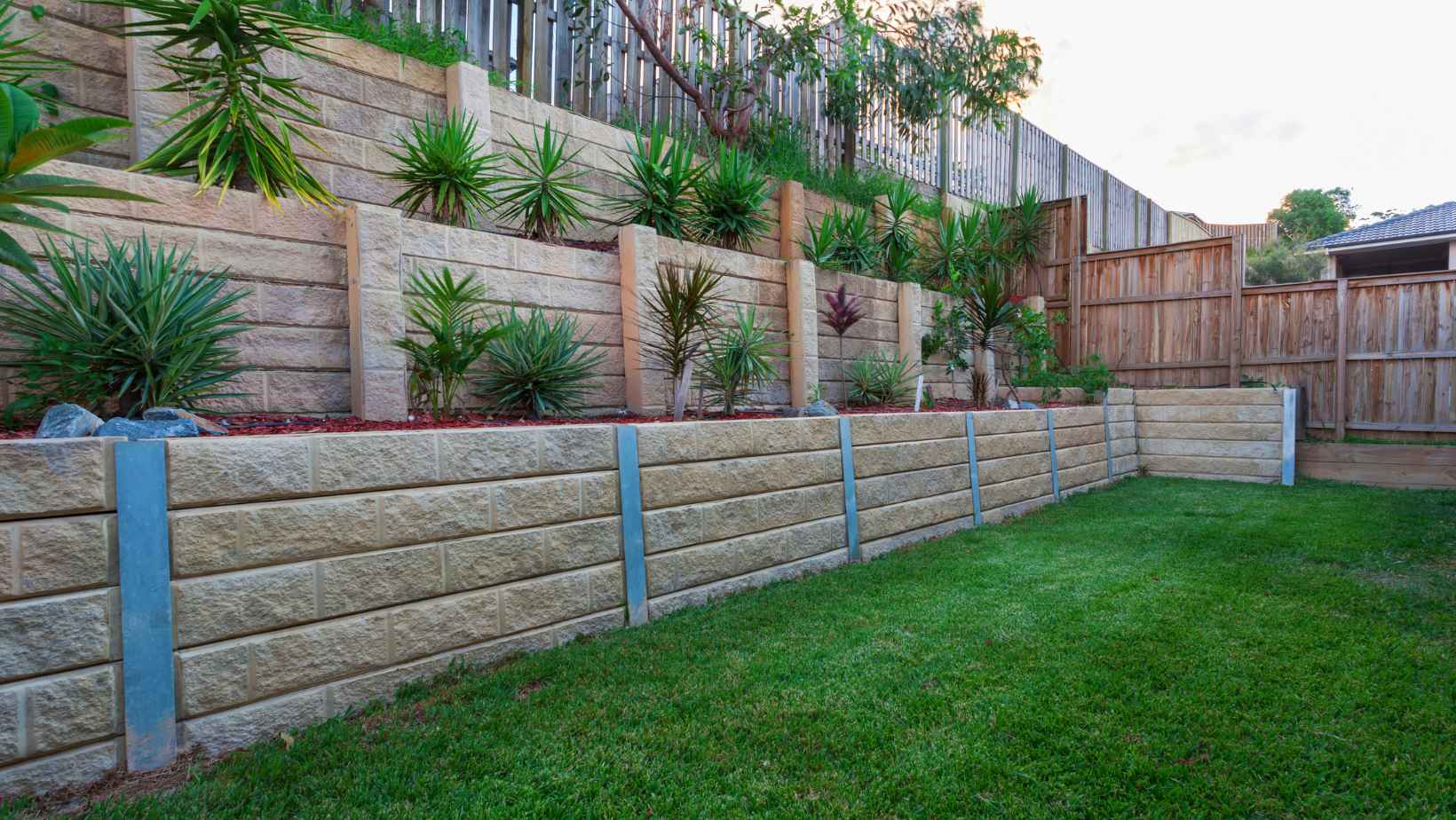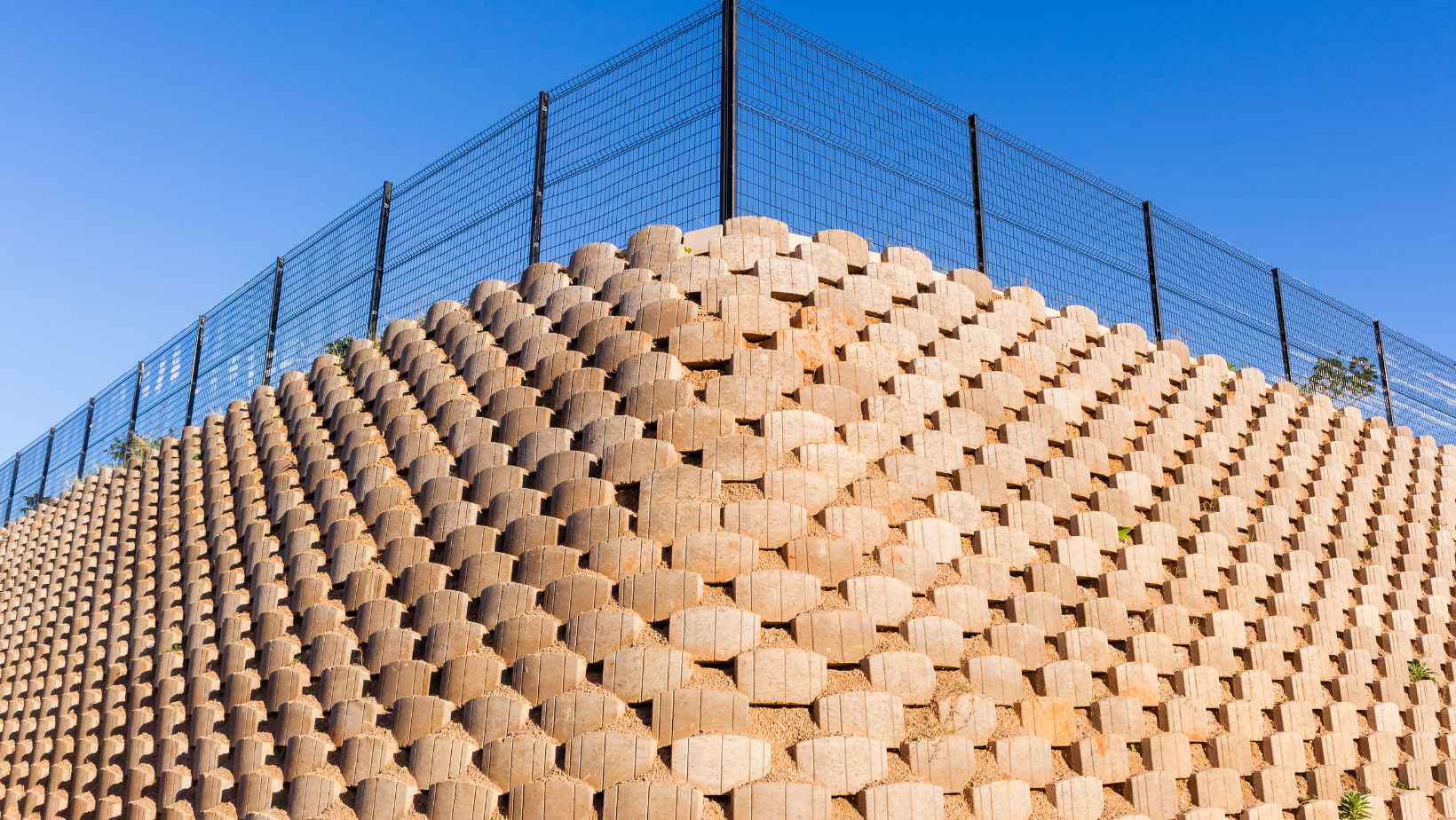Struggling with building on a steep slope or aiming to prevent soil erosion? Retaining walls offer the ideal solution. These sturdy support structures are engineered to hold back soil and establish functional spaces on sloping terrain. This guide will cover all the vital information about retaining walls, including types of retaining walls, materials used, and the process of constructing retaining walls. We’ll also discuss how these wall structures can create a level base, allowing for more practical outdoor space and improved landscaping possibilities. So let’s get started and unravel the mysteries of retaining walls!
Understanding Retaining Walls: Their Purpose
Retaining walls are resilient structures crafted from various materials such as natural stone, concrete, or engineered wall materials. Their main objective is to provide extra stability to slopes and counter the natural movement of soil, ensuring soil retention and erosion prevention.
Primary Functions of Retaining Walls
- Soil retention: Retaining walls hinder the downward movement of soil, reducing erosion and keeping it in position.
- Creating space: These structures regulate excavated soil movement, producing more functional space for roads, pathways, or construction projects.
- Visual appeal: Retaining walls can function as ornamental garden walls, enriching the overall design of sloped gardens and incorporating retaining wall aesthetics in landscape design.
Various Types of Retaining Walls
Numerous types of retaining walls exist, each featuring unique characteristics and advantages. You can select from various styles, dimensions, and textures to match your specific requirements:
- Gravity retaining walls: These structures depend on their own mass to counter soil’s lateral pressure and typically do not need additional anchoring.
- Cantilever retaining walls: These walls extend beneath the soil they support, offsetting lateral earth pressure with their extended structure.
- Anchored retaining walls: These walls feature an anchoring point, like a chain, to lessen the pressure of loose soil.
- Counterfort retaining walls: These walls include extra support buttresses within their design.
- MSE (Mechanically Stabilized Earth) walls: These structures comprise multiple layers of compacted backfill.
Design and Building Considerations for Retaining Walls
To guarantee a successful retaining wall project, consider the following aspects:
- Materials: Popular materials for retaining walls encompass concrete, masonry, and natural stone. Concrete blocks can be pre-fabricated or poured on-site, providing flexibility in comparison to other materials. Precast concrete is another sought-after choice, as it offers a broad range of styles and textures to complement your landscape design.
- Wall type: Opt for the suitable wall type for managing the soil pressure, as freestanding and cantilever retaining walls possess different designs and limitations.
- Drainage: Adequate drainage is crucial for all retaining walls to minimize water erosion. Implementing efficient retaining wall drainage systems is vital, even for fundamental retaining wall designs.

The Process of Constructing Retaining Walls
Building a retaining wall typically involves several steps, completed by licensed professionals:
- Planning: Develop a strategy for the proposed retaining wall, from public road walls to basement walls for slope-built homes. Contemplate elements such as depth, dimensions, and the kinds of planters you want to integrate into the design.
- Excavation: Some excavation is generally required before constructing a retaining wall. Even alternatives like gabion walls might necessitate excavation for retaining walls.
- Execution: Retaining walls are built according to the plans provided by an architect, landscape architect, or engineer. Some exceptions apply for smaller projects, like garden walls with dry-stacked gravity walls.
Advice for a Successful Retaining Wall Project
- Soil type: Consider the type of soil being retained, as it influences the choice of materials and retaining wall design considerations.
- Water management: Implement a proper drainage system to prevent retaining wall failures due to water infiltration.
- Erosion, settlement, and seismic activity: Retaining walls in earthquake-prone areas should be made with materials that can withstand minor soil movements. Soil erosion beneath walls may require additional anchoring, as advised by an engineer.
- Building: Ensure that you obtain all necessary permits and work with qualified professionals to construct your retaining wall properly.
In a nutshell…
Retaining walls can convert unmanageable slopes into functional areas, allowing you to build roads, buildings, gardens, pools, and driveways. By basing your retaining wall project on the factors discussed in this guide, such as types of retaining walls, retaining wall materials, and design considerations, you can ensure a successful outcome. Remember to take into account the specific requirements of your project, such as soil type, water management, and regional concerns like seismic activity, while planning and executing the construction process. With proper planning and professional execution, retaining walls can provide a long-lasting solution for managing sloping terrain and enhancing the aesthetics of your landscape. They can also create usable outdoor space, expand landscaping options, and provide a solid foundation for various elements such as planters and outdoor structures. So go ahead, take the plunge, and explore the world of retaining walls to make the most of your sloping land!
